Difference between revisions of "Basic rules when dealing with leather"
From www.leather-dictionary.com - The Leather Dictionary
| Line 99: | Line 99: | ||
=== Basic rules when dealing with [[Leather shoes|leather shoes]] === | === Basic rules when dealing with [[Leather shoes|leather shoes]] === | ||
* First check if the leather is [[Open pore leather|absorbent]]. On absorbent leathers ([[Aniline leather|aniline leather]], [[Suede|suede]], [[Nubuck|nubuck]]) a rubbed-in drop of water will sink into the surface and darken the leather. On non-absorbing leathers water runs off. Absorbent leathers are much more sensitive. | * First check if the leather is [[Open pore leather|absorbent]]. On absorbent leathers ([[Aniline leather|aniline leather]], [[Suede|suede]], [[Nubuck|nubuck]]) a rubbed-in drop of water will sink into the surface and darken the leather. On non-absorbing leathers water runs off. Absorbent leathers are much more sensitive. | ||
| − | + | * First test all products and treatments in a hidden area. Especially when working on [[Open pore leather|absorbent]] leather. Absorbent leather can easily be damaged if treated wrong. | |
| − | + | * [[Open pore leather|Porous]] leather should regularly be protected with [[Waterproofing leather|waterproofing]]. But be careful! Despite such waterproofing, porous leather always remains sensitive and should not be worn in bad weather conditions. | |
| − | + | * Regular [[Leather cleaner|cleaning]] and [[Leather care|caring]] of furniture leather prevents staining and [[Leather damages|signs of wear]] and extends the life span. | |
| − | + | * Always [[Leather cleaner|clean]] dirty leather before using [[Leather care|leather care]] products. | |
| − | + | * Always work with the recommended products from seam to seam. | |
| − | * | + | * Don’t rub too hard on stains which cannot be removed. You risk damaging the surface. Contact a specialist first. |
| − | * | + | * Don’t use aggressive solvents (acetone, nail polish remover, turpentine etc.) or abrasive liquids [[Leather cleaner||to remove stains and dirt]]. You will cause damages. |
| − | * [[ | + | * Don’t use wrong [[Leather care|care products]] like cosmetic creams. |
| − | + | * Leather gets [[Leather damages#Signs of wear on leather|traces of use]] after a while. Leather can [[Leather damages#Fading of leather|fade]] over the years. If changes occur (e. g. scratches, stains, fading), react early enough. The earlier leather is helped, the easier it is to keep the leather nice over a long period. | |
| − | * | + | * Stir out wetted shoes with newspaper paper and allow to dry at room temperature. Do not use a hairdryer and do not dry in direct sunlight. Otherwise the leather gets hard and stiff. Soften the leather by moving the leather fibres at the end of the drying process or when dry. |
| − | + | * Leather has an optimum humidity of 40 to 60% and needs ventilation. Leather can become [[Moldy leather - Mouldy leather|mold]] when humidity is above 70% and/or without enough air circulation. | |
| − | * | + | * [[Open pore leather|Porous leather]] inside the shoes [[Dye transfer from leather|can dye]] the socks. Always make a rubb test with a light and slightly moistened cloth. If the [[Dye transfer from leather|discolouration]] is too strong, darker socks must be worn in order to avoid unwished colouration. |
| − | * | + | |
| − | * | + | |
| − | * | + | |
| − | * | + | |
| − | * | + | |
| − | * [[ | + | |
| Line 127: | Line 121: | ||
=== Basic rules when dealing with [[Leather handbags|leather bags]] === | === Basic rules when dealing with [[Leather handbags|leather bags]] === | ||
| + | |||
| + | |||
| + | |||
| + | |||
* Zuerst das Leder überprüfen, ob es absorbierend oder nicht absorbierend ist. Bei absorbierenden Ledern ([[Anilinleder]] oder [[Rauleder]]) dringt ein verriebener Tropfen Wasser ein und dunkelt das Leder. Bei nicht absorbierenden Ledern perlt Wasser ab. Absorbierende Leder sind empfindlicher. | * Zuerst das Leder überprüfen, ob es absorbierend oder nicht absorbierend ist. Bei absorbierenden Ledern ([[Anilinleder]] oder [[Rauleder]]) dringt ein verriebener Tropfen Wasser ein und dunkelt das Leder. Bei nicht absorbierenden Ledern perlt Wasser ab. Absorbierende Leder sind empfindlicher. | ||
* Alle Anwendungen, soweit möglich, zuerst in einem verdeckten Bereich testen. Insbesondere bei [[Offenporige Leder|offenporigen]] Ledern besteht die Gefahr der „Verschlimmbesserung“! | * Alle Anwendungen, soweit möglich, zuerst in einem verdeckten Bereich testen. Insbesondere bei [[Offenporige Leder|offenporigen]] Ledern besteht die Gefahr der „Verschlimmbesserung“! | ||
Revision as of 10:48, 4 December 2016
Basic rules when dealing with leather
Leather is a beautiful and natural material. Considering the most important basic rules, it is long lasting, durable and remains beautiful.
Solvent-containing products or excessive rubbing will damage the surface colouration.
Improper cleaning attempts often increase the stains. Depending on the situation, the spots get lighter or darker outer edges.
Basic rules when dealing with leather funiture
- First check if the leather is absorbent. On absorbent leathers (aniline leather, suede, nubuck) a rubbed-in drop of water will sink into the surface and darken the leather. On non-absorbing leathers water runs off. Absorbent leathers are much more sensitive.
- First test all products and treatments in a hidden area. Especially when working on absorbent leather. Absorbent leather can easily be damaged if treated wrong.
- Regular cleaning and caring of furniture leather prevents staining and signs of wear and extends the life span.
- Always clean dirty leather before using leather care products.
- Let the leather always dry by itself. Do not use a hairdryer and do not dry in direct sunlight. Otherwise the leather can shrink.
- Light leathers are sensitive to “jeans colouration” or any form of dye transfers. Always clean immediately after visible stains to avoid colouration sinking into the surface.
- Always work with the recommended products from seam to seam.
- Don’t rub too hard on stains which cannot be removed. You risk damaging the surface. Contact a specialist first.
- Don’t use aggressive solvents (acetone, nail polish remover, turpentine etc.) or abrasive liquids |to remove stains and dirt. You will cause damages.
- Don’t use wrong care products like shoe polishes and cosmetic creams.
- Leather changes because of sunlight and heat. Leather can fad and get dry. Try to avoid direct daily sunlight and the proximity of heating. Always use care products with UV protection.
- Leather gets traces of use after a while. Leather can fade over the years. If changes occur (e. g. scratches, stains, fading), react early enough. The earlier leather is helped, the easier it is to keep the leather nice over a long period.
- Leather has an optimum humidity of 40 to 60% and needs ventilation. Leather can become mold when humidity is above 70% and/or without enough air circulation.
- Coloured leather furniture, especially open-pore leather, oiled or waxed leather or suede should not be pushed directly to light walls with rough surfaces to avoid colourations to the wall. A simple test: Rub with a light, damp cloth in hidden area on the leather and check the colouration. Light colouration is normal when testing these types of leather.
Basic rules when dealing with car leather
- Apart from a few exceptions, automotive leather is provided with a protective color coating. In doubt, first check the leather whether it is absorbent (porous) or non-absorbent. On absorbent leathers (aniline leather, suede, nubuck) a rubbed-in drop of water will sink into the surface and darken the leather. On non-absorbing leathers water runs off. Absorbent leathers are much more sensitive.
- First test all products and treatments in a hidden area. Especially when working on absorbent leather. Absorbent leather can easily be damaged if treated wrong.
- Regular cleaning and caring of furniture leather prevents staining and signs of wear and extends the life span.
- Always clean dirty leather before using leather care products.
- Let the leather always dry by itself. Do not use a hairdryer and do not dry in direct sunlight. Otherwise the leather can shrink.
- Light leathers are sensitive to “jeans colouration” or any form of dye transfers. Always clean immediately after visible stains to avoid colouration sinking into the surface.
- Always work with the recommended products from seam to seam.
- Don’t rub too hard on stains which cannot be removed. You risk damaging the surface. Contact a specialist first.
- Don’t use aggressive solvents (acetone, nail polish remover, turpentine etc.) or abrasive liquids |to remove stains and dirt. You will cause damages.
- Don’t use wrong care products like shoe polishes and cosmetic creams.
- Leather changes because of sunlight and heat. Leather can fad and get dry. Try to avoid direct daily sunlight and the proximity of heating. Always use care products with UV protection.
- Leather gets traces of use after a while. Leather can fade over the years. If changes occur (e. g. scratches, stains, fading), react early enough. The earlier leather is helped, the easier it is to keep the leather nice over a long period.
- Leather has an optimum humidity of 40 to 60% and needs ventilation. Leather can become mold when humidity is above 70% and/or without enough air circulation.
Basic rules when dealing with Leather clothing
- First check if the leather is absorbent (porous). On absorbent leathers (aniline leather, suede, nubuck) a rubbed-in drop of water will sink into the surface and darken the leather. On non-absorbing leathers water runs off. Absorbent leathers are much more sensitive.
- First test all products and treatments in a hidden area. Especially when working on absorbent leather. Absorbent leather can easily be damaged if treated wrong.
- Porous leather should regularly be protected with waterproofing. But be careful! Despite such waterproofing, porous leather always remains sensitive and should not be worn in bad weather conditions.
- Regular cleaning and caring of furniture leather prevents staining and signs of wear and extends the life span.
- Always clean dirty leather before using leather care products.
- Let the leather always dry by itself. Do not use a hairdryer and do not dry in direct sunlight. Otherwise the leather can shrink. Soften the leather by wringing at the end of the drying process or when dry.
- Garment leather can also be washed with suitable leather detergents].
- Always work with the recommended products from seam to seam.
- Don’t rub too hard on stains which cannot be removed. You risk damaging the surface. Contact a specialist first.
- Don’t use aggressive solvents (acetone, nail polish remover, turpentine etc.) or abrasive liquids |to remove stains and dirt. You will cause damages.
- Don’t use wrong care products like shoe polishes and cosmetic creams.
- Leather changes because of sunlight and heat. Leather can fad and get dry. Try to avoid direct daily sunlight and the proximity of heating. Always use care products with UV protection.
- Leather gets traces of use after a while. Leather can fade over the years. If changes occur (e. g. scratches, stains, fading), react early enough. The earlier leather is helped, the easier it is to keep the leather nice over a long period.
- Leather has an optimum humidity of 40 to 60% and needs ventilation. Leather can become mold when humidity is above 70% and/or without enough air circulation.
- Allow leather clothing to hang free with sufficient distance and ventilation. Too strong crumpled leather gets wrinkles, which cannot easily be removed.
Basic rules when dealing with leather shoes
- First check if the leather is absorbent. On absorbent leathers (aniline leather, suede, nubuck) a rubbed-in drop of water will sink into the surface and darken the leather. On non-absorbing leathers water runs off. Absorbent leathers are much more sensitive.
- First test all products and treatments in a hidden area. Especially when working on absorbent leather. Absorbent leather can easily be damaged if treated wrong.
- Porous leather should regularly be protected with waterproofing. But be careful! Despite such waterproofing, porous leather always remains sensitive and should not be worn in bad weather conditions.
- Regular cleaning and caring of furniture leather prevents staining and signs of wear and extends the life span.
- Always clean dirty leather before using leather care products.
- Always work with the recommended products from seam to seam.
- Don’t rub too hard on stains which cannot be removed. You risk damaging the surface. Contact a specialist first.
- Don’t use aggressive solvents (acetone, nail polish remover, turpentine etc.) or abrasive liquids |to remove stains and dirt. You will cause damages.
- Don’t use wrong care products like cosmetic creams.
- Leather gets traces of use after a while. Leather can fade over the years. If changes occur (e. g. scratches, stains, fading), react early enough. The earlier leather is helped, the easier it is to keep the leather nice over a long period.
- Stir out wetted shoes with newspaper paper and allow to dry at room temperature. Do not use a hairdryer and do not dry in direct sunlight. Otherwise the leather gets hard and stiff. Soften the leather by moving the leather fibres at the end of the drying process or when dry.
- Leather has an optimum humidity of 40 to 60% and needs ventilation. Leather can become mold when humidity is above 70% and/or without enough air circulation.
- Porous leather inside the shoes can dye the socks. Always make a rubb test with a light and slightly moistened cloth. If the discolouration is too strong, darker socks must be worn in order to avoid unwished colouration.
Basic rules when dealing with leather bags
- Zuerst das Leder überprüfen, ob es absorbierend oder nicht absorbierend ist. Bei absorbierenden Ledern (Anilinleder oder Rauleder) dringt ein verriebener Tropfen Wasser ein und dunkelt das Leder. Bei nicht absorbierenden Ledern perlt Wasser ab. Absorbierende Leder sind empfindlicher.
- Alle Anwendungen, soweit möglich, zuerst in einem verdeckten Bereich testen. Insbesondere bei offenporigen Ledern besteht die Gefahr der „Verschlimmbesserung“!
- Offenporige Leder sollten regelmäßig imprägniert werden. Aber Achtung! Trotz Imprägnierung sind solche Taschen nie richtig wasserdicht und sollten bei entsprechender Witterung auch nicht getragen werden.
- Eine regelmäßige Reinigung und Pflege reduziert Anschmutzungen, Gebrauchsspuren und Alterungsschäden und verlängert dadurch deutlich die Lebensdauer.
- Bei Verschmutzungen vor der Pflege immer erst reinigen!
- Alle Produkte immer von Naht zu Naht einsetzen.
- Flecken, die in das Leder eingezogen sind, nicht durch starkes Reiben zu entfernen versuchen. Die Oberfläche kann dadurch zusätzlich verletzt werden. Fragen Sie dann lieber einen Lederexperten um Rat.
- Flecken nie mit starken Lösungsmitteln (Aceton, Nagellackentferner, Terpentin, etc.) zu entfernen versuchen. Die Flecken werden dadurch eher größer.
- Das Leder nicht mit ungeeigneten Produkten behandeln. Kosmetikcreme, Bohnerwachs etc.
- Leder bekommt mit der Zeit Gebrauchsspuren, und manche Leder bleichen mit der Zeit aus. Das ist normal und gehört zur Patina eines Leders. Wenn störende Veränderungen sichtbar werden, sollte man rechtzeitig handeln. Je früher Leder gereinigt und gepflegt sowie Farbschäden angeglichen werden, desto leichter ist das Leder noch über einen langen Zeitraum schön zu halten.
- Nass gewordene Taschen bei Raumtemperatur trocknen lassen. Nicht in der Sonne oder auf der Heizung trocknen lassen.
- Leder hat eine optimale Luftfeuchtigkeit von 40 bis 60% und benötigt Luftzirkulation. Bei Luftfeuchtigkeit von über 70% und mangelnder Luftzirkulation kann Leder schimmeln.
- Ledertaschen können abfärben. Daher Taschen lieber in Stoffbeuteln lagern.
Additional information
- Leather care
- Leather care instructions
- Shoe care
- Leather cleaner
- Ecological leather care
- Washing and dry cleaning leather







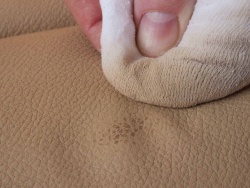
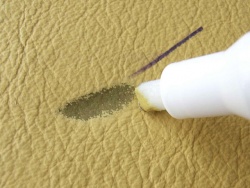
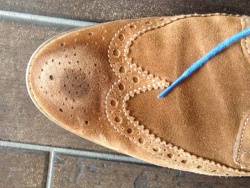
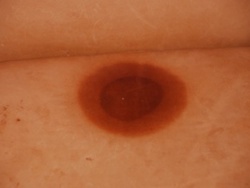
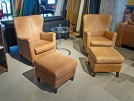
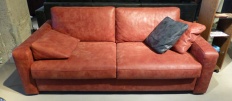
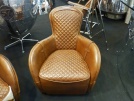

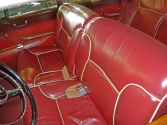

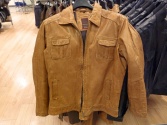
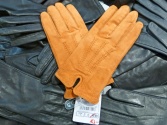
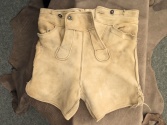
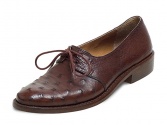
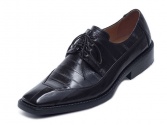
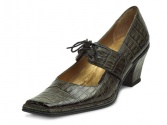
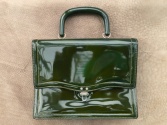
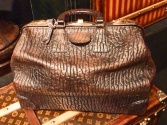
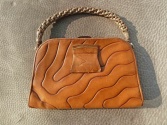

 a kotori web solution
a kotori web solution